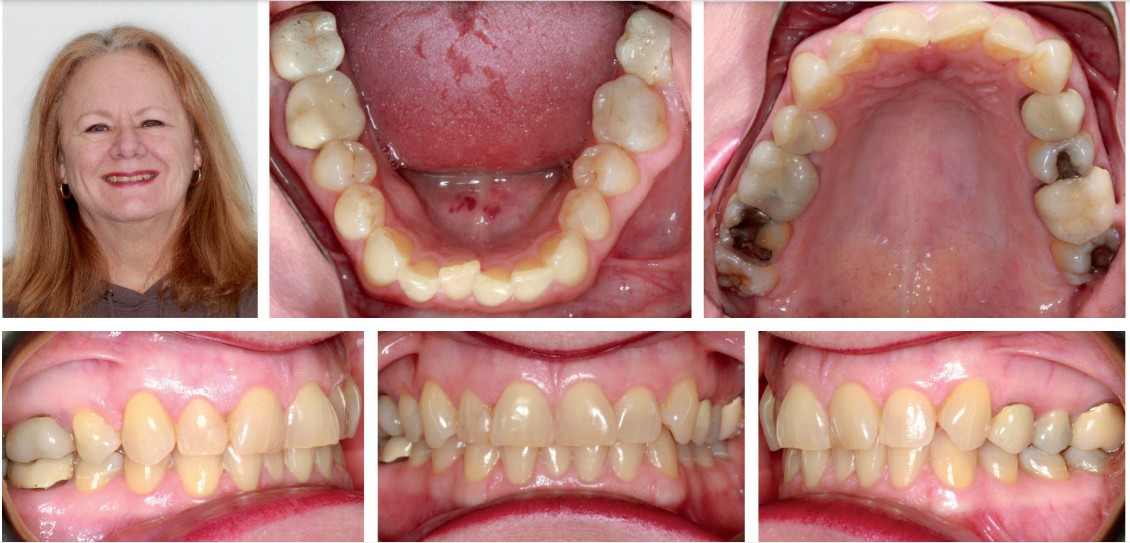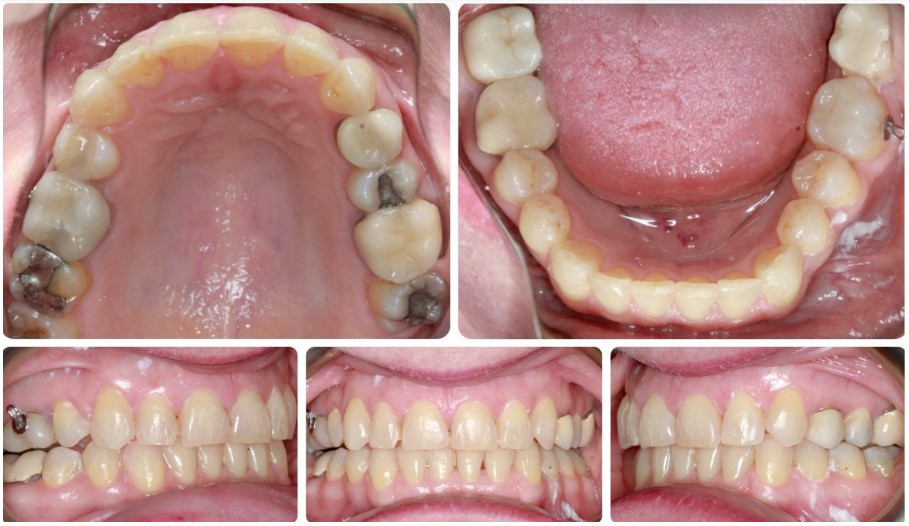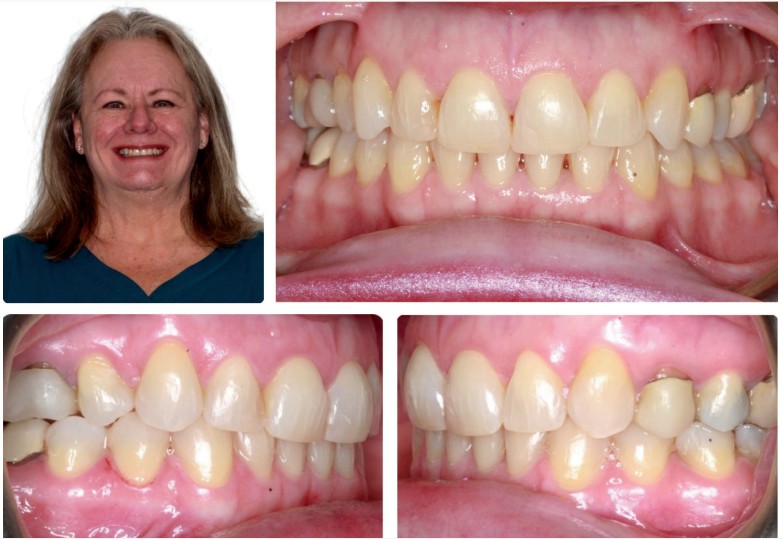Dr. Jeffrey M. Heinz illustrates a case where Spark™ Clear Aligners created a successful outcome for an important patient (his mother).
Dr. Jeffrey M. Heinz illustrates a clinical case study treated with Spark™ Clear Aligners
In my practice, I have traditionally reserved my most challenging cases for braces rather than clear aligner therapy, including some tricky adult cases. However, in my experience, when faced with the fact that a majority of adults are more interested in clear aligners than braces, it can make treatment plan presentations delicate, which can decrease case acceptance.
It just so happens that my mother represents one of these cases. Orthodontic care was not a financial option for her family as a child, and so her dentist decided to extract a unilateral maxillary first bicuspid to “get rid of her crowding,” leaving me with a tricky orthodontic case. This report will take you through the nuances of her case, all of which had to be completed on a short timeline prior to my wedding!
In my continuing quest to become the best orthodontist I can be, I have dived into the world of clear aligners and have been continually pushing the limits of what I see as “an aligner case” — taking the complicated and making it predictable, comfortable, and patient centric.
In late 2018, I discovered Spark™ Clear Aligners. Spark Aligners can treat a wide variety of patient malocclusions, including open bite, deep bite, overbite (Class II), underbite (Class III), crossbite, crowding, and spacing.1 In my opinion, a combination of esthetic and preferred features of Spark Aligners versus the leading aligner brand made the decision to use Spark Aligners for my mother a simple one.
I’ve found several important patient-centric differences with this product:
- Spark Aligners are more transparent and minimize staining compared to the leading competitor, allowing patients a discreet treatment.1
- TruGEN™ material has been proven to provide advanced “sustained force retention” and also have 19% better contact surface area with the tooth, which may result in more efficient tooth movement and productive treatment compared to the leading aligner material.1
- Unlike the leading aligner brand, Spark Aligners are designed with scalloped and smooth edges to enhance patient comfort and improve the overall treatment experience.1
Diagnosis

At the time of treatment, my mother was 64 years old. Her childhood dentist extracted her UR4 due to crowding since her family was not able to afford braces (Figure 1). This left her with a half-step Class II molar and a Class III canine on the right side. She was also a half- step Class II on the left side, which combined to make her upper midline off to the right and her lower midline off to the left, approximately 3.5 mm (Figure 1). She had constricted arches and a significant deep bite causing attrition to her upper and lower incisors.
In my experience with aligners, significant asymmetric bite correction has been tough to achieve, but Mama Bear wasn’t too keen on the idea of braces, so we decided to give it a shot.
Treatment plan
- Clear aligner treatment utilizing Spark Aligners for dental expansion and deep bite protocols
- Class III elastics on the right side and Class II elastics on the left side
- IPR L3-3
- Cosmetic bonding U2-2 after deep bite is eliminated
- 14 months of treatment (30 initial trays plus 15 trays refinement)
Treatment progression

After 30 trays (Figure 2), the vast majority of dental expansion and alignment was completed. Class II correction on the left side and Class III correction on the right side were both progressing nicely, and she started wearing her elastics. Her deep bite was opened, so I performed some cosmetic bonding prior to her refinement scan to eliminate the attrition that was caused by her malocclusion (Figure 3). I then prescribed 15 active trays with continued bite correction and settling of her right side posterior occlusion.

Final records were taken after the 15-tray refinement, and we were thrilled with the results (Figure 4). My mom turned out to be a great patient and loves her new smile. We achieved a healthy Class I canine relationship on both sides and a socked-in posterior occlusion. No settling was necessary posttreatment; these photos were taken the day of debond. Her upper midline is now coincident with her facial midline, and her lower midline has made significant improvement from pretreatment records.

Conclusion
My mom initially had 30 active trays followed by 15 trays in refinement. She was in treatment for a total of 14 months and had seven in-office visits. We could have shaved off a progress appointment or two since she was doing so well wearing her trays, but we had fun working together, so I didn’t mind a few extra appointments!
I have been continually pushing the limits of what I see as “an aligner case” — taking the complicated and making it predictable, comfortable, and patient centric.
As we push the limits of aligner therapy, I am continually impressed by what we can accomplish with plastic, specifically Spark Clear Aligners. Treating cases confidently with plastic has changed my practice and will continue to play a bigger and bigger role in our office.
Dr. Bill Dischinger used Spark™ Clear Aligners for an open bite closure with TADS. See how he treated narrow arches and anterior open bite with clear aligner therapy here: https://orthopracticeus.com/using-spark-clear-aligners-in-open-bite-closure-with-tads/
- Ormco Corporation. Data on file.
Stay Relevant With Orthodontic Practice US
Join our email list for CE courses and webinars, articles and mores

 Jeffrey M. Heinz, DDS, MSD, graduated from Michigan State University, attended the University of Detroit Mercy School of Dentistry, and spent 2 years at Indiana University where he received his Certificate in Orthodontics and Master of Science in Dentistry. Dr. Heinz lectures nationally on how to straighten teeth efficiently and effectively with clear aligner systems, participates in clinical trials shaping leading-edge orthodontic products, is a multi-year recipient of HOUR Detroit Magazine’s “Top Orthodontists 2021” award, and is a Diplomate of the American Board of Orthodontics. Dr. Heinz has two private practice locations in Kentwood and Rockford, Michigan.
Jeffrey M. Heinz, DDS, MSD, graduated from Michigan State University, attended the University of Detroit Mercy School of Dentistry, and spent 2 years at Indiana University where he received his Certificate in Orthodontics and Master of Science in Dentistry. Dr. Heinz lectures nationally on how to straighten teeth efficiently and effectively with clear aligner systems, participates in clinical trials shaping leading-edge orthodontic products, is a multi-year recipient of HOUR Detroit Magazine’s “Top Orthodontists 2021” award, and is a Diplomate of the American Board of Orthodontics. Dr. Heinz has two private practice locations in Kentwood and Rockford, Michigan.
